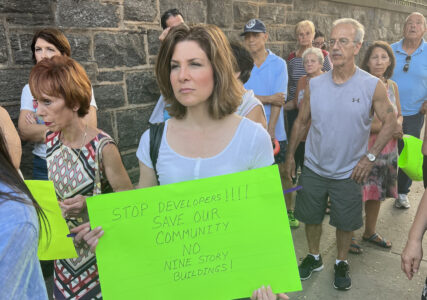One Brooklyn street is near the top of the list – and it’s not a good thing.
According to a new report released by the Tri-State Transportation Campaign, pedestrian fatalities, between 2011 and 2013, totaled 732 deaths within the 12 downstate New York counties – 130 of them in Brooklyn — with Flatbush Avenue ranked as the third “most dangerous road” to walk on in the downstate area, tied with the Bronx’s Grand Concourse, behind only Route 25 in Suffolk and Route 24 in Nassau.
The analysis, appropriately titled: “The Region’s Most Dangerous Roads for Walking,” used federal traffic fatality data to catalog the most hazardous roads for pedestrians in downstate New York. The report ranks roads by total deaths and includes interactive maps which highlight the location, age, and gender of each pedestrian fatality.
“We commend the Tri-State Transportation Campaign for identifying the need for improvements on our arterial streets, which are the site of most fatal crashes,” said Paul Steely White, executive director of Transportation Alternatives. “Even though they only make up a small percentage of our road network, there is demand from communities across the five boroughs to make multi-lane speedways. We urge the city to commit to redesigning these hazardous corridors with improvements including pedestrian refuge islands, dedicated bus lanes and protected bus lanes.”
Flatbush Avenue and the Grand Concourse each had 10 pedestrian fatalities during the three-year period in which the study was conducted. The Suffolk roadway rated the most dangerous had twice that, with 20 pedestrian fatalities during the same time period.
According to the study’s “Brooklyn Factsheet,” Eastern Parkway came in close behind Flatbush Avenue with seven fatalities occurring between 2011 and 2013, and was ranked sixth overall in the study. Broadway and Atlantic Avenue tied for third in Brooklyn with five fatalities each, coming in, in eighth place.
Flatbush Avenue and Eastern Parkway both saw increases in the number of fatalities since the last time the study was conducted. The number of fatalities along Atlantic Avenue was unchanged since the last study. Broadway was a new addition to the list.
“Walking is a critical part of living a, healthy, active lifestyle, but not all communities are safely walkable,” said Monica Chierici, project director, Division of Health Policy at the New York Academy of Medicine. “This report is a useful tool for advocates interested in improving the health and safety of their communities by improving conditions for pedestrians.”
While the city has already made strides with the implementation of lowered speed limits, pedestrian safety cameras, and legislation penalizing irresponsible drivers via Vision Zero, a program that outlines “pedestrian safety action plans” for all five boroughs, Nadine Lemmon, the New York and Federal Policy coordinator for the Tri-State Transportation Campaign, said there is room for improvement statewide.
“Vision Zero should be a goal for the entire state of New York given that New York State has the highest fatality rate in the nation for pedestrians and bicyclists at 29 percent,” said Lemmon. “While NYS released nearly $143 million in federal funding for pedestrian and bicycle projects throughout the state, the state itself has not yet established a dedicated fund for these projects in the state budget.”
The report’s recommendations include: “using the flexibility of federal transportation funding to prioritize improvements for walking and bicycling; protecting the most vulnerable pedestrians through increased spending on Safe Routes to School, Safe Routes to Transit and Safe Routes for Seniors programs; and adopting and implementing Complete Streets laws and policies to ensure that new and retrofitted roads safely accommodate all users.”
To view the full report, visit tstc.org/reports/danger15.

 Not in our backyard! Dyker rallies to prevent ‘out of character’ nine-story building from being built
Not in our backyard! Dyker rallies to prevent ‘out of character’ nine-story building from being built  Housing going up at Angel Guardian Home site: School also slated to be built at location
Housing going up at Angel Guardian Home site: School also slated to be built at location